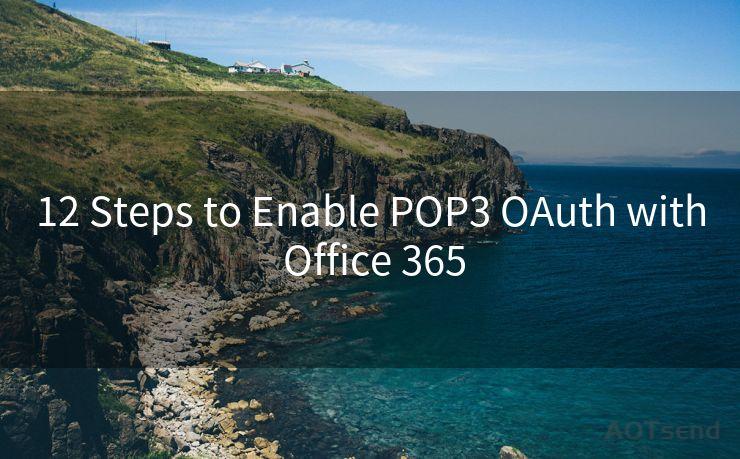12 Steps to Enable POP3 OAuth with Office 365




When it comes to integrating email services with third-party applications or devices, the use of POP3 (Post Office Protocol 3) with OAuth authentication can be a powerful and secure solution. This is particularly true when working with Office 365, Microsoft's cloud-based productivity suite. In this article, we'll outline the 12 steps necessary to enable POP3 OAuth with Office 365, ensuring secure and efficient email access.
Step 1: Understanding POP3 and OAuth
POP3 is a standard protocol used to receive emails from a remote server to a local email client. OAuth, on the other hand, is an open standard for access delegation, commonly used as a way for Internet users to grant websites or applications access to their information on other websites without giving away their passwords.
Step 2: Preparing Your Office 365 Account
Before enabling POP3 OAuth, ensure your Office 365 account is properly set up and you have the necessary permissions to make changes.
Step 3: Accessing Your Account Settings
Log into your Office 365 account and navigate to the account settings. This is where you'll find the options to manage your email protocols and authentication methods.
Step 4: Locating POP3 Settings
Within your account settings, find the section related to POP3 and IMAP settings. You'll need to access these settings to configure OAuth authentication.
Step 5: Enabling POP3 Access
Enable POP3 access in your account settings. This will allow external applications or devices to use POP3 to retrieve emails from your Office 365 account.
Step 6: Configuring OAuth Authentication
Instead of using traditional username and password authentication, opt for OAuth. This involves registering your application or device with Office 365 to obtain the necessary credentials.
Step 7: Registering Your Application
Go through the process of registering your application or device with Office 365. This typically involves providing information about your application and agreeing to the terms of service.

Step 8: Obtaining OAuth Credentials
Once registered, you'll receive OAuth credentials (such as a client ID and secret) that will be used for authentication.
Step 9: Setting Up Your POP3 Client
Configure your POP3 client (whether it's a software application or a hardware device) to use OAuth authentication. This involves entering the OAuth credentials you obtained in the previous step.
Step 10: Testing the Connection
Test the connection between your POP3 client and Office 365 to ensure everything is working properly. Send and receive a few test emails to verify functionality.
Step 11: Monitoring and Troubleshooting
Regularly monitor your email account and POP3 connection for any issues. If problems arise, troubleshoot by checking your OAuth credentials, network settings, and POP3 client configuration.
Step 12: Keeping Your Settings Up to Date
As Office 365 and your POP3 client undergo updates, make sure to keep your settings up to date to maintain a secure and efficient connection.
By following these 12 steps, you can successfully enable POP3 OAuth with Office 365, allowing for secure and efficient email access from third-party applications or devices. Remember to always prioritize security and keep your settings updated to ensure uninterrupted service.
🔔🔔🔔
【AOTsend Email API】:AOTsend is a Managed Email Service for sending transactional emails. Support Email Types: reminders, authentication, confirmations, notifications, verification codes, invoices, password resets, account activations, billing statements, two-factor authentication (2FA), and one-time passwords (OTP) emails, etc. $0.28 per 1000 Emails. 99% Delivery, 98% Inbox Rate.
You might be interested in:
Why did we start the AOTsend project, Brand Story?
What is a Managed Email API, How it Works?
Best 25+ Email Marketing Platforms (Authority,Keywords&Traffic Comparison)
Best 24+ Email Marketing Service (Price, Pros&Cons Comparison)
Email APIs vs SMTP: How they Works, Any Difference?




Scan the QR code to access on your mobile device.
Copyright notice: This article is published by AotSend. Reproduction requires attribution.
Article Link:https://www.mailwot.com/p3758.html



